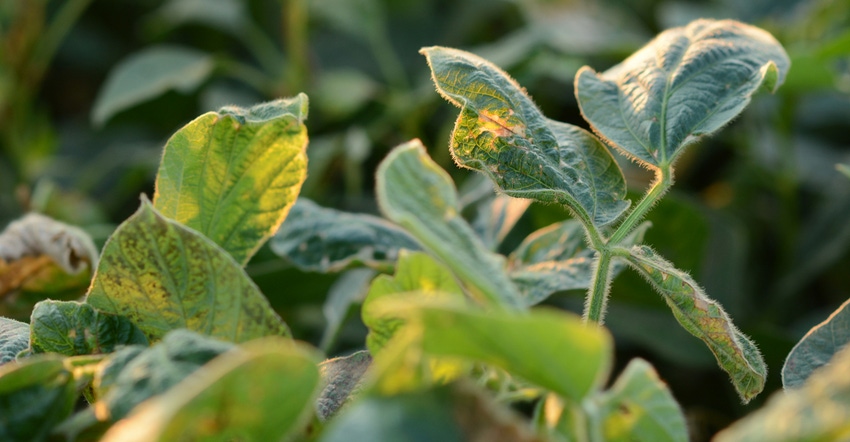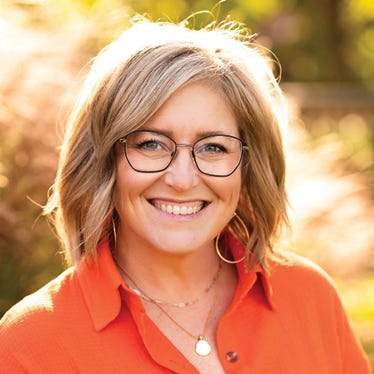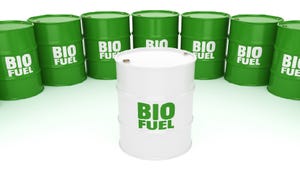
The Illinois Department of Agriculture last month drew a line in the sand for 2020 dicamba herbicide applications, cutting them off at June 20 and 85 degrees F. But how did it land on that date? And that temperature?
“We didn’t take the decision lightly,” says Doug Owens, head of IDOA’s Bureau of Environmental Programs. “Director Sullivan ultimately had to approve that decision, and I know from observation it was very tough.”
The “why” of the decision is clear: Complaints about off-target movement were too high. Director John Sullivan was on record early in his appointment saying the number of off-target dicamba complaints had to come down in 2019. They didn’t. In fact, they more than doubled, from 330 in 2018 to 720 in 2019.
“We had to take some kind of action,” Owens says. “Our goal is to maintain use of the technology while still trying to protect growers and other individuals who have crops or plants that are sensitive to off-target dicamba movement.”
To determine a cutoff date, IDOA studied weather patterns and looked closely at what’s happened the past couple of years. Dicamba’s pattern of volatilization and off-target movement typically occurs during warmer temperatures, and weather records show average temperatures statewide haven’t reached 85 degrees until sometime between June 20 and July 1. That data helped them arrive at the June 20 application cutoff.
“We’re trying to encourage use of the product earlier in the season, when temperatures are cooler and susceptible crops are maybe less mature,” Owens says.
In 2019, IDOA pushed its June 30 cutoff back to July 15, but the second week of July proved incredibly hot, contributing heavily to the off-target movements — and complaints. So while the 2020 cutoff date will push applications earlier, Owens says one thing is for sure: “Mother Nature is exempt from our statutes.”
Thus, the 85-degree application limit. “We thought 85 was a realistic threshold to put in there, just in case we have a hot spell before June 20,” he adds.
IDOA also wants state-specific restrictions to be simple so they’re easy to comply with. Owens says everyone can understand June 20 is the cutoff date, making it easy to comply with and easy to enforce.
Collecting information
The department sought input from farm and commodity groups, scientists and industry, including all product registrants. Again, Owens stresses, the decision went back to the number of complaints.
In 2019, IDOA set an initial application cutoff date of June 30, the first time Illinois had enacted any additional dicamba restrictions. These Special Local Needs labels fall under Section 24(c) of the Federal Insecticide, Fungicide and Rodenticide Act, or FIFRA, which states can use to pass more restrictive rules on federal pesticide labels.
Thanks to the unusually wet spring and delayed planting season, IDOA extended the cutoff date to July 15. Temperatures soared above 90 degrees during the second week in July, and Owens says off-target dicamba damage complaints were rolling in by the last week of July. They continued through Sept. 1. IDOA’s goal at that point was to gather information and make a decision early, so farmers could plan ahead for 2020. They began discussions in mid-September and announced restrictions Oct. 11.
As of press time, IDOA was reviewing draft labels before submitting them to EPA. Labels will go into effect Jan. 1.
“We want everybody to succeed,” Owens says. “And we want to protect growers who use dicamba and those who don’t.”
Bayer responds
Bayer Crop Science says the number of field inquiries to its 844-RRXTEND hotline decreased dramatically in 2019, to just 146 off-target movement inquiries in Illinois as of Sept. 25 — a dramatic difference from IDOA’s 708 complaints by that date. According to Charla Lord, with Bayer public affairs and sustainability, the company encourages growers, applicators and others to contact Bayer with concerns about symptomology, “but not all do.”
Bayer defines inquiries as the number of fields the calls pertain to, so the number is not necessarily equal to the number of calls received. IDOA’s 708 complaints are actual calls about off-target dicamba movement.
Lord says they’re looking at inquiries to understand what herbicides were applied nearby, and at the same time, what environmental conditions were like and whether applicators followed label requirements.
“We have also seen symptomology resulting from herbicides other than dicamba, spray system hygiene [including tank contamination] and weather-related issues,” Lord says. “In fields where we have observed herbicide symptomology, many have been further impacted by recent environmental stress due to drought.”
She adds that while Bayer is pleased Illinois growers will have access to XtendiMax, “we had hoped the department would recognize the existing federal label requirements that offer growers certain parameters for applications — such as apply prior to beginning bloom or no more than 45 days after planting in soybeans.”
IDOA has submitted its draft 24(c) Special Local Needs label to EPA. What’s next? “We will await word from the EPA,” Lord says.
About the Author(s)
You May Also Like






